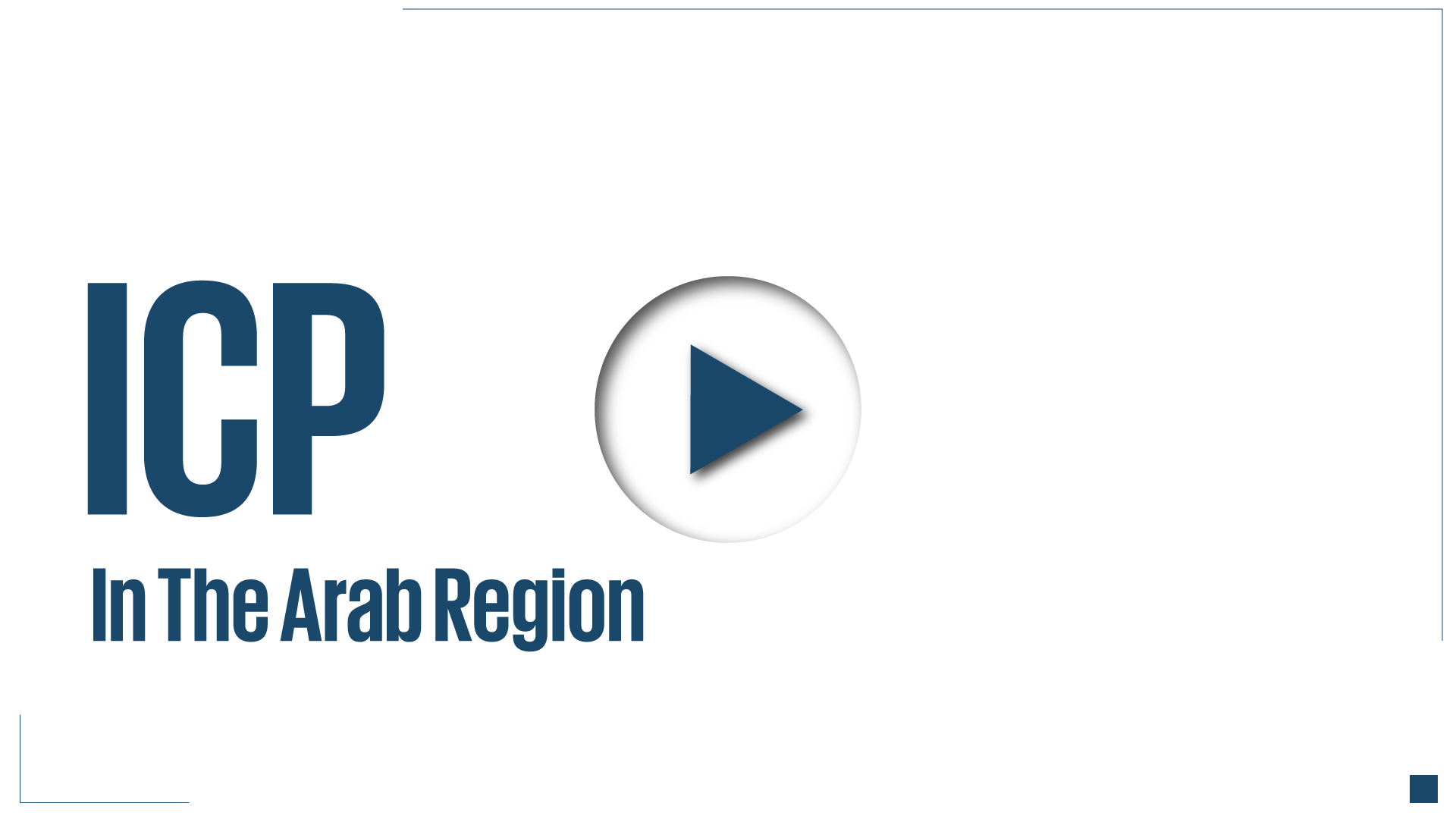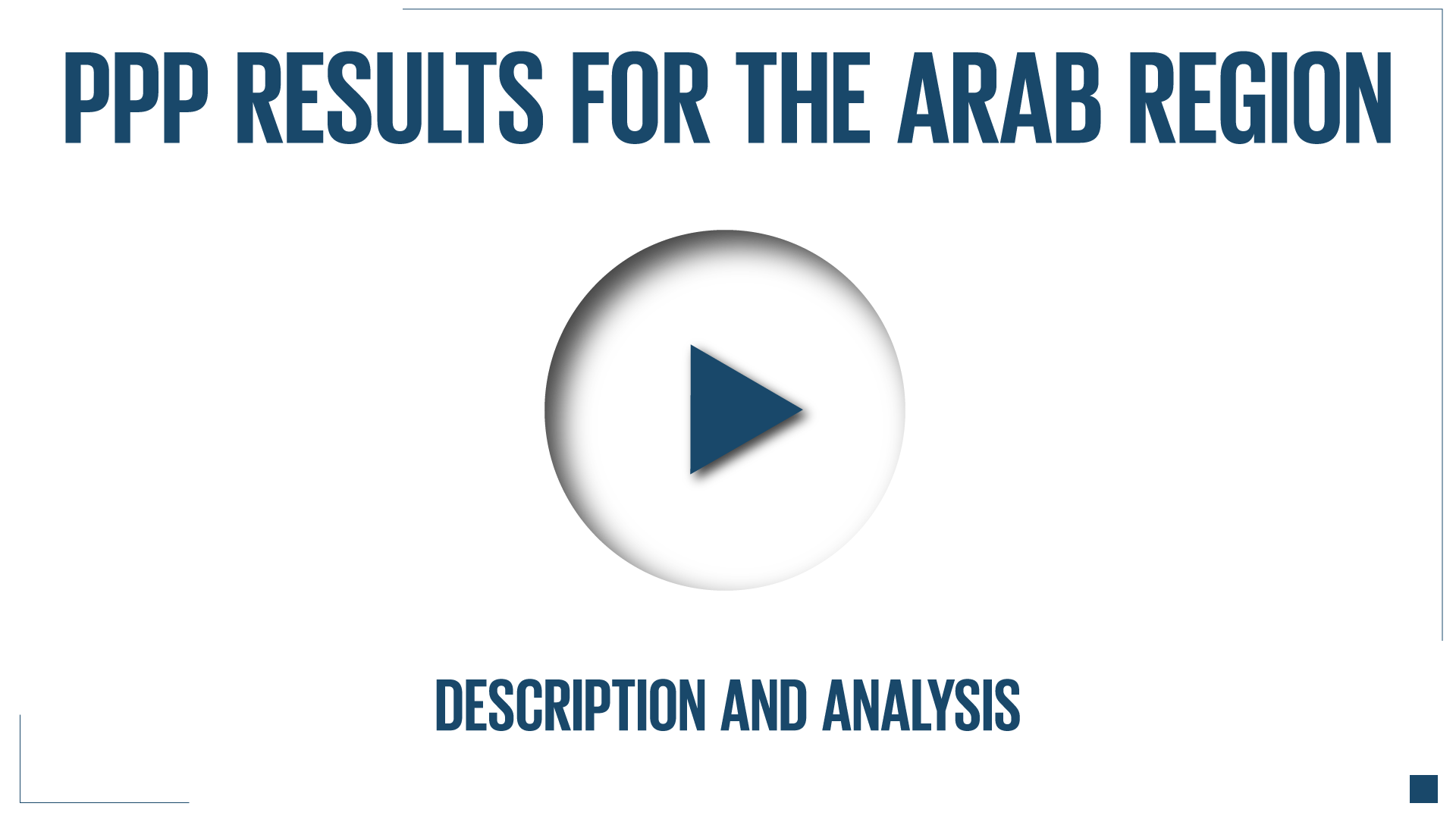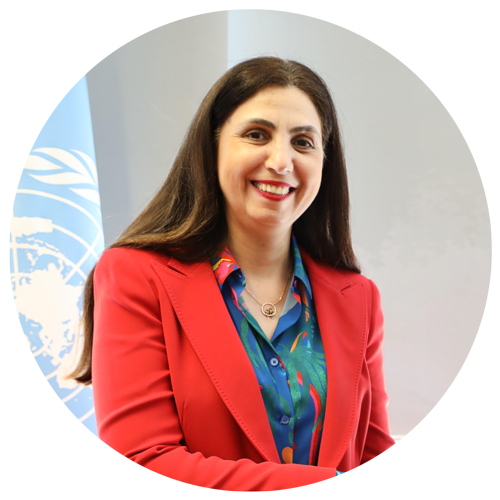Purchasing Power Parities and the Real Size of Arab Economies
A comprehensive regional report covering PPP results for the years 2011 to 2019
"Realistic economic comparisons are the key to sustainable development and effective policymaking"
At such times of global uncertainty, exacerbated by the COVID-19 pandemic, with some world economies undergoing stagnation and financial crisis, people recognize the importance of purchasing power parity (PPP) conversions given that prices may vary significantly across countries, while most official market exchange rates remain fixed, thus not reflecting the real relative value of currencies and their purchasing power across different countries. The importance of the International Comparison Programme (ICP) lies in producing reliable PPP estimates employed in measuring the real sizes of economies, thus enabling spatial comparisons of economy sizes, total and per capita income, individual material well-being and price levels, and providing crucial data for informed decision-making and evidence-based policies.
Rola Dashti Executive Secretary UN ESCWA
Acknowledgments
The International Comparison Programme (ICP) is managed by the global ICP office at the World Bank under the auspices of the United Nations Statistical Commission. In the Arab region, the 2017 ICP cycle was managed and implemented by the regional ICP office located at the Economic and Social Commission for Western Asia (ESCWA), led by Majed Skaini, ICP Regional Programme Manager, with the assistance of Sadim Sbeiti, Research Assistant, and the former assistance of Jala EL Akoum, Research Assistant, under the guidance of Juraj Riecan, Director of the Statistics Division, and with the support of Wafa Aboul Hosn, Chief of the Economic Statistics Section. This report, including the regional results and associated analysis, was prepared by Majed Skaini and Sadim Sbeiti.
1. introduction to the International Comparison Programme and Purchasing Power Parities

Introduction
The International Comparison Programme (ICP) is one of the biggest international
statistical initiatives worldwide. It aims at providing comparable price and volume
measures of gross domestic product (GDP) and its aggregates across countries and regions.
The main output of the ICP is purchasing power parities (PPPs).
2. The ICP in the Arab Region

Introduction
In the Arab region, PPP computation was sustained between global ICP benchmark years and beyond. ESCWA thus computed PPPs for 12 Arab countries for the years 2012 to 2016, which fall between the global ICP rounds of 2011 and 2017, and for 2018 and 2019. ESCWA effectively established an annual regional series of actual PPPs extending from 2011 to 2019.
3. PPP Uses in Sustainable Development Goals
Introduction
PPPs are used in monitoring the progress made in achieving the SDGs and the 2030 Agenda for Sustainable Development. PPPs enter into the computation of several indicators under SDG targets which are used to measure and monitor progress on eight goals: SDGs 1, 2, 3, 4, 7, 8, 9 and 10.
4. PPP Results: Detailed Description and Major Findings for the Arab Region

Introduction
In 2017, the real size of the Arab economy was more than twice its size when measured in nominal terms. The total Arab region’s economy in 2017 accounted for around 4 per cent of the global economy in real PPP terms, whereas it only contributed 3 per cent in nominal exchange rate terms. In contrast to what exchange rates show, both the average regional per capita income and material wellbeing appeared higher than the world averages in real PPP terms.
5. Country Profiles
click on any country for detailsThis tree map represents country profiles for the year 2017
Introduction
In PPP terms, the biggest economy in the Arab region is Saudi Arabia, contributing 31 per cent of the Arab region’s real GDP in 2017 with a real GDP of $1,566 billion followed by Egypt, with a real GDP of $1,263 billion, contributing 25 per cent of the regional economy. The smallest economy in the Arab region is the State of Palestine, representing less than 1 per cent of the regional GDP. The two most expensive Arab countries are Qatar and the United Arab Emirates, whereas the two countries with the lowest price levels in the region are Egypt and Sudan.
6. Detailed Series of Results for the Years 2011 to 2017
Real GDP in US Dollars: 2011 to 2017 (in billions)
click on the timeline"There is no data for Morocco for the years 2011 to 2013"
Introduction
The detailed tables for 2011 to 2017 include ICP results of the Arab region linked to the US dollar through a global linking with all other regions. They include purchasing power parities, price level indices, real versus nominal expenditures and real versus nominal per capita expenditures. Results are published at different levels such as the levels of gross domestic product, actual individual consumption, household consumption, government consumption, gross fixed capital formation and others.
7. Detailed Series of Results for the Years 2011 to 2019
Price Level Indices from 2011 to 2019 (Arab Region = 100)
click on the timeline"There is no data for Morocco for the years 2011 to 2013"
Introduction
The detailed tables for 2011 to 2019 include ICP results of the Arab region linked to the Omani Riyal. Global linking of the regional results to the US dollar for 2018 and 2019 is not yet possible as the global PPP results have only been produced up until 2017and the Arab region is the only region to compute annual PPPs beyond 2017. The tables include results of the purchasing power parities of Arab currencies relative to the Omani Riyal, the price level of each economy relative to Oman’s price level of 100, real and nominal expenditures and per capita income in Omani Riyals. They also display countries’ PLIs if the average price level of the Arab region is 100.
8. ONLINE PPP CONVERTER
9. The PPP Production Process
Introduction
The computation of PPPs can only be conducted after finalizing the computation and validation of national annual average prices at the detailed item level on one side, and the detailed expenditure breakdown of GDP and its aggregates to the level of 155 basic headings on another side. Only then the computation of regional PPP estimates can commence, after the finalization of which the global PPP computation process can proceed.
10. Access Full Database
11. Country Testimonials at the global level
Here you can watch some of the country testimonials at global meetings of the statistical community, specifically at the 51st session of the UN statistical commission in March 2020, at the UN headquarters in New York.

